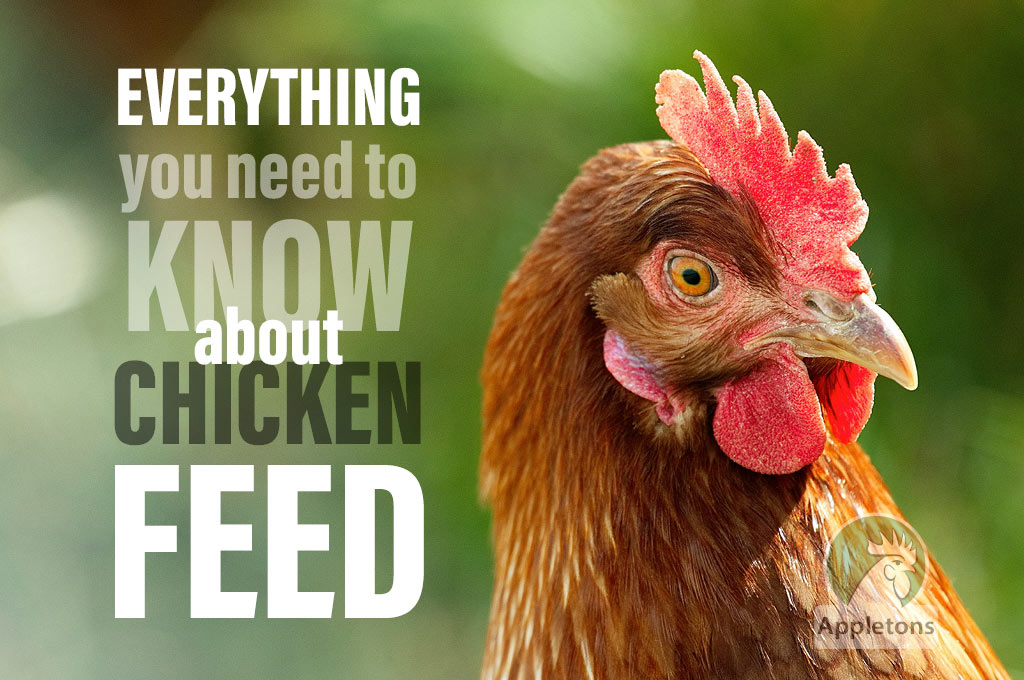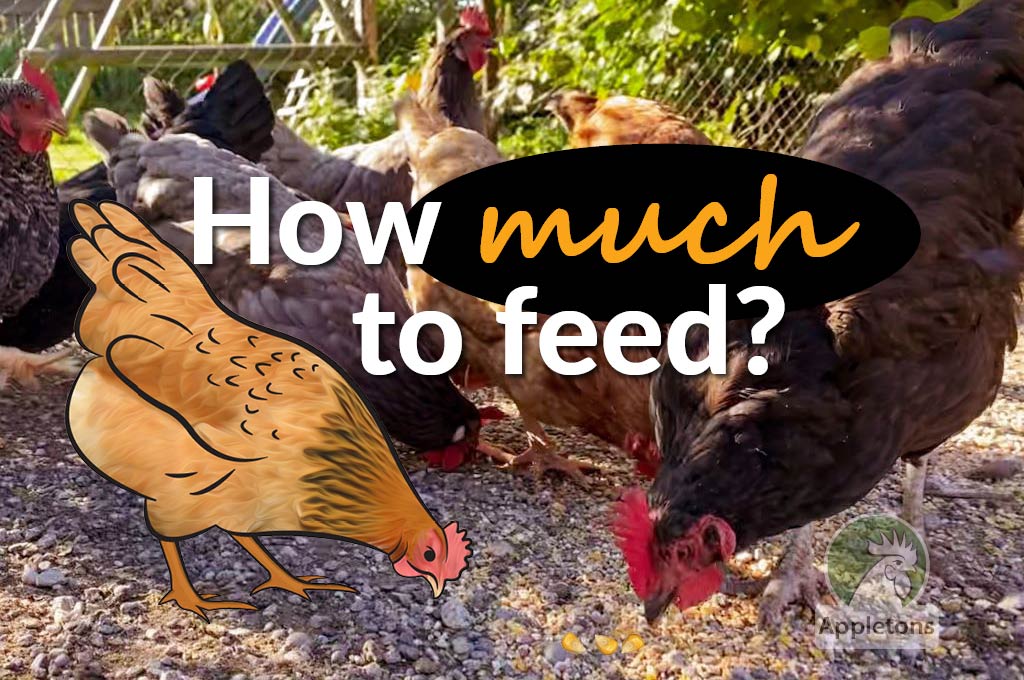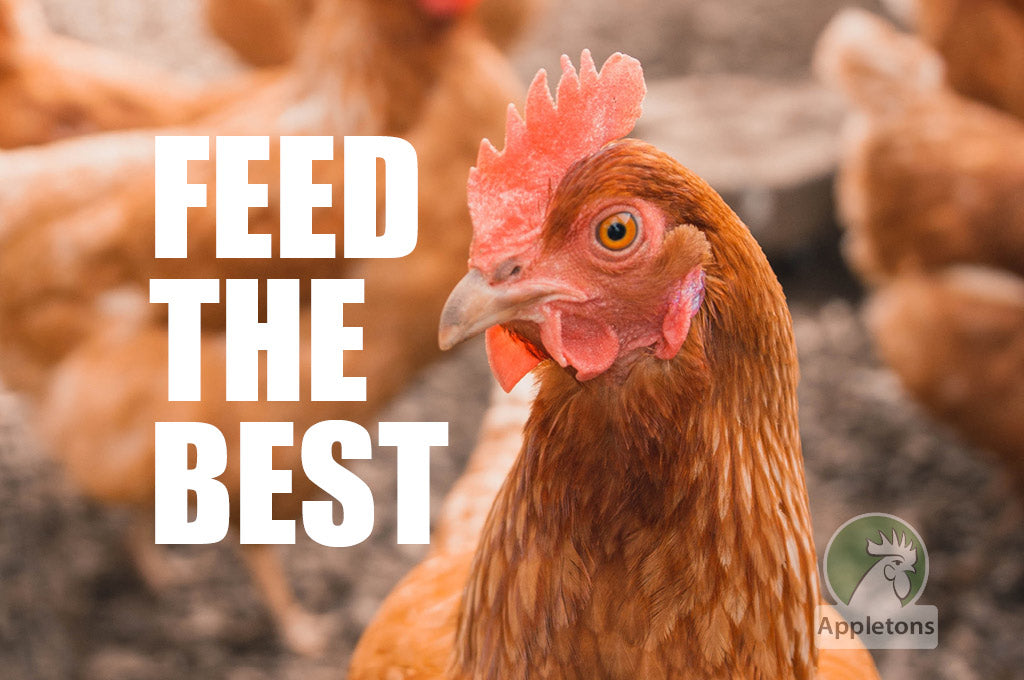Feeding Your Flock
Top Layers Need Balanced Feed
Feeding your chickens quality feed is the way to achieve healthy, happy, productive hens. What you put in is what you get out! These days most poultry need to eat a specially formulated diet to ensure they are getting the correct balance of protein to fat to carbohydrates with added minerals and vitamins suited to the age of the bird. Today the commercially made feeds are specially tailored to the needs of each age and manufactured to the highest levels of production. When purchasing poultry feed it is very important to look at the ingredients (written on the bag) and at the analysis which will give the breakdown of fat to protein to carbohydrates.


What's in Your Poultry Feed?
Look at the Label 😊
One of the key ingredients to look for is what type of protein is in the feed you are buying. We recommend animal protein as the best type of protein to feed your chooks. Chickens are not vegetarians! They love eating meat. Chooks will forage for insects, slugs and worms and they will strip the meat off bones, catch mice and eat your dinner leftovers to get their protein. Look for ruminant protein (meat & bone meal and blood meal) as your key protein ingredients and these need to be at least 16% preferably 18% for optimum production. 16% is the minimum requirement of crude protein in commercial layer feed to meet the needs of a laying hen. Feeding out pellets is better than mash. Pellets we have found to be less wasteful and easier for the birds to pick up and swallow. Commercial poultry feed has a shelf life of around 12 weeks so best to buy more regularly than than in bulk. One bag at a time. Chickens don’t like stale feed. Don’t chop and change your brand, chooks like routine and get used to what they eat. Keep them on the same quality feed otherwise you could upset their laying routine.



Swipe for more
Invest in an Automatic Chicken Feeder 👍
Chickens are wasteful and messy feeders so investing in a decent suspension feeder (hung at right height like a mini-food bar in the hen house) or step-on feeder (best placed in the house) is a worthwhile investment. The step-on chicken feeders are in our opinion the best value as they give your birds access to feed all day and prevent mice and sparrows from helping themselves and soiling the contents. The automatic step-on feeders come in a range of sizes so best to get one suitable for your size and number of chooks. If you need any help choosing the right feeder talk to us.
- Feed out ad lib using a step-on or suspension feeder.
- Chickens eat when hungry (little and often through out the day) and are not prone to ‘pig out’ like puppies.
- On average a laying hen eats 120 to 140 grams a day.
- Using open dishes and flat trays to feed chickens is very wasteful as chooks love to flick and scratch feed everywhere.
- Wheat and maize should be feed out only as a treat feed and should not make up more than 10% of their diet. Feed out this carbo snack late afternoon when you go to have some time-out with your chooks.
- Kitchen and vegetable garden scraps can be feed out but just as a supplement to their main feed which will be the layers pellets (90%).
- Never feed out more kitchen scraps than they can eat in 10 minutes.




Remember Different Feed for Different Stages
Day old and young chicks will need to be fed chick crumble. This is a high protein crumble designed to grow the chicks well. Most chick crumble is medicated and contain a coccidiostat for the prevention of coccidiosis. We recommend feeding out chick crumble up to POL (point of lay) as it is the best feed nutritionally for growing pullets. Growing good, strong healthy birds will produce good strong healthy layers. When pullets are at POL then switch over to premium layer pellets. We recommend the Weston Free Range or Weston Peak layer Pellets. These pellets are specially formulated to give your laying birds all they need to lay eggs for you. Please do not feed layer mash or layer pellets to chicks or growing chickens as the higher levels of calcium cannot be easily excreted and will damage the kidneys of the young birds. So when you next go to buy a bag of feed for your chooks – remember to look at the label, go for animal proteins preferably around 18+%. Feed your chooks well it is worth it! We cannot stress enough how important it is to feed your birds correctly.
Busy Hens are Happy Hens! 😊
Working Girls in the Veggie Garden
Keeping your hens on a balanced diet is important for good health and high egg production. However giving them access to free range is a bonus and one your hens will love. Additional greens whether hand picked from the vegetable garden and popped in an Omlet Chicken Caddi Treat Holder or self helped from the orchard will help to yellow up the yolks. Nothing beats a beautiful golden sponge or rich yellow omelette.
Use the Chicken Fencing to contain them whilst they free range.

White Leghorn and Brown Shaver hens enjoying some time in the veggie patch.





Swipe for more
A handful of scratch treats helps build a great relationship with your hens.
Remember treats are only given in small amounts and best in the late afternoon.
Go on! Spoil your hens now with some of these delicous treats 😊 






Swipe for more

Rhode Island Red hens having some treat time.
Treats are a Bonus
Treating your chooks to some delicious nibbles should only be done in small amounts and preferably in the late afternoon. Interacting with your hens will give you so much joy and is a great way to de-stress at the end of a day. Also great fun for the kids. Whether it be scratch treats like Topflite Scratch & Lay in an Omlet Peck Toy or a seed block your hens will love the interaction and enjoyment of foraging for a tasty reward.
 Busy Hens are Happy Hens
Busy Hens are Happy Hens